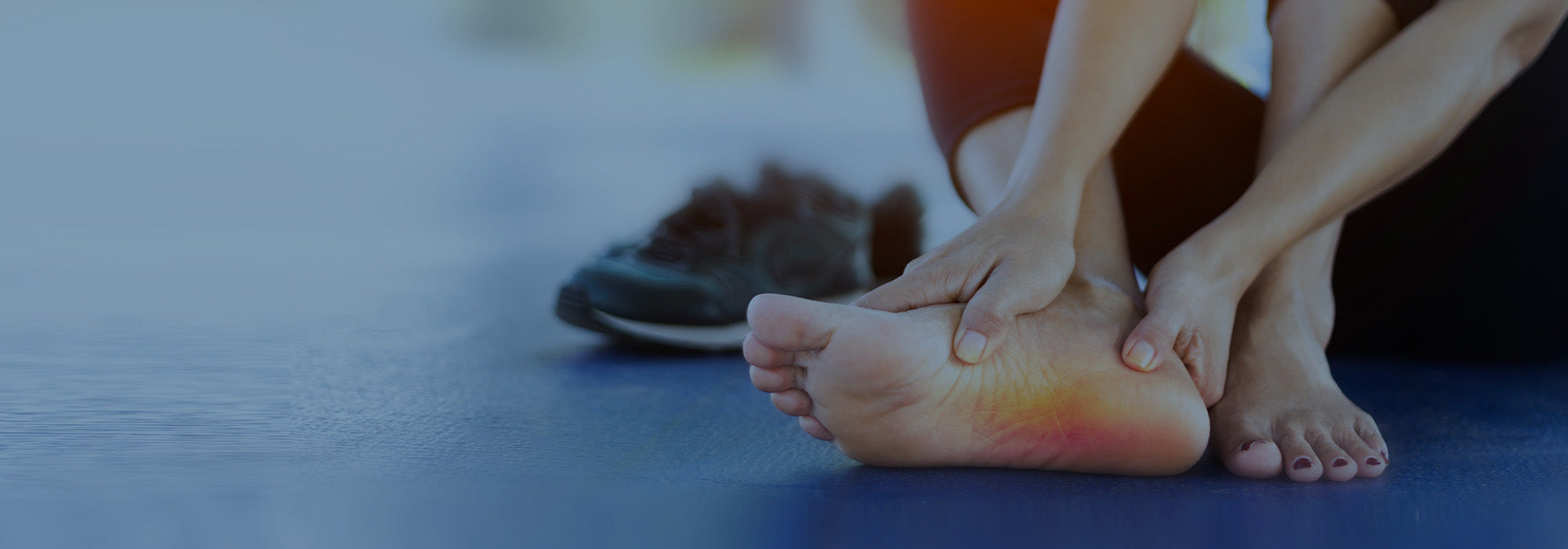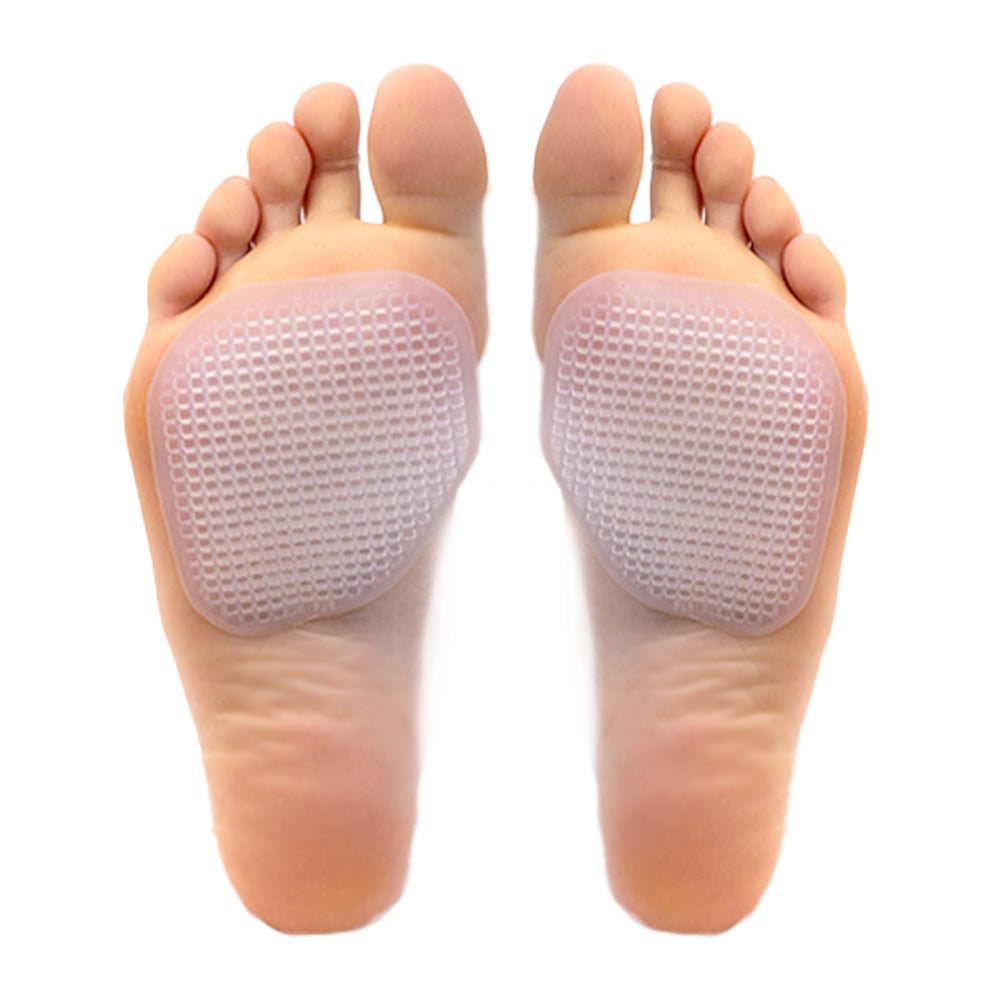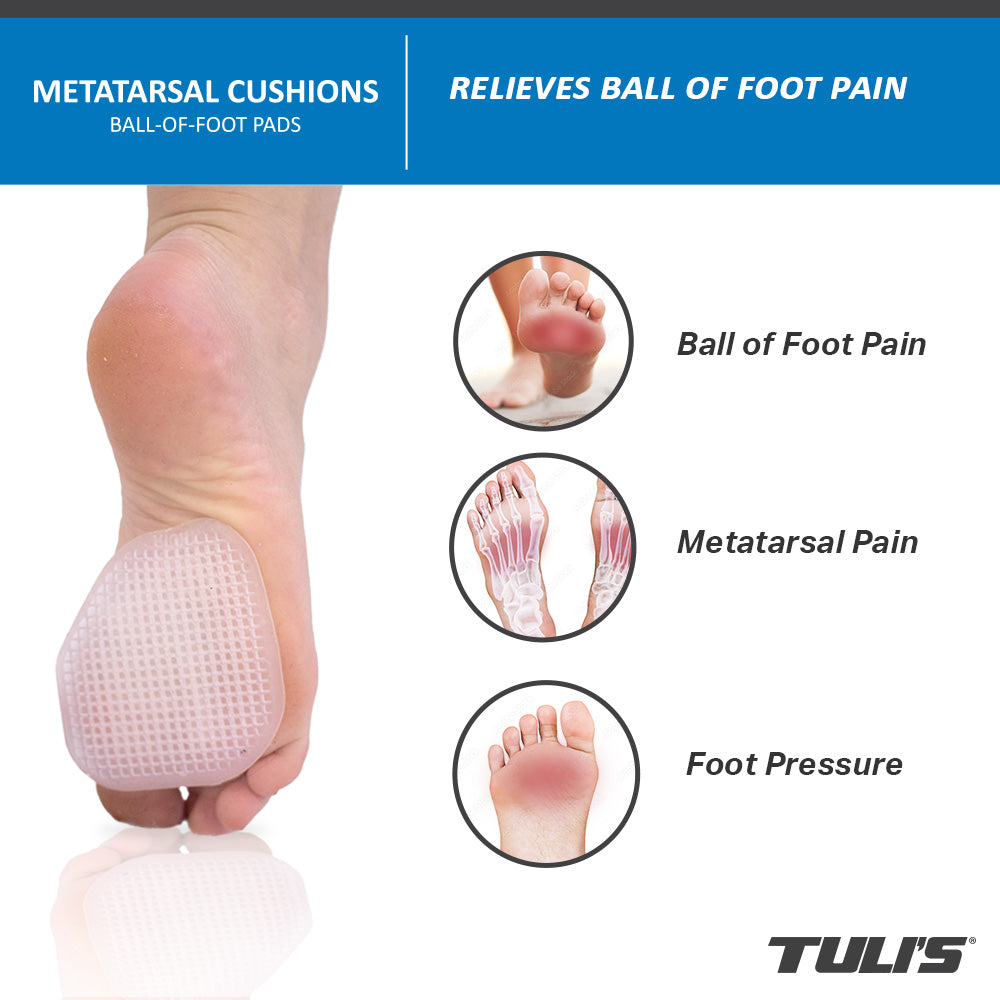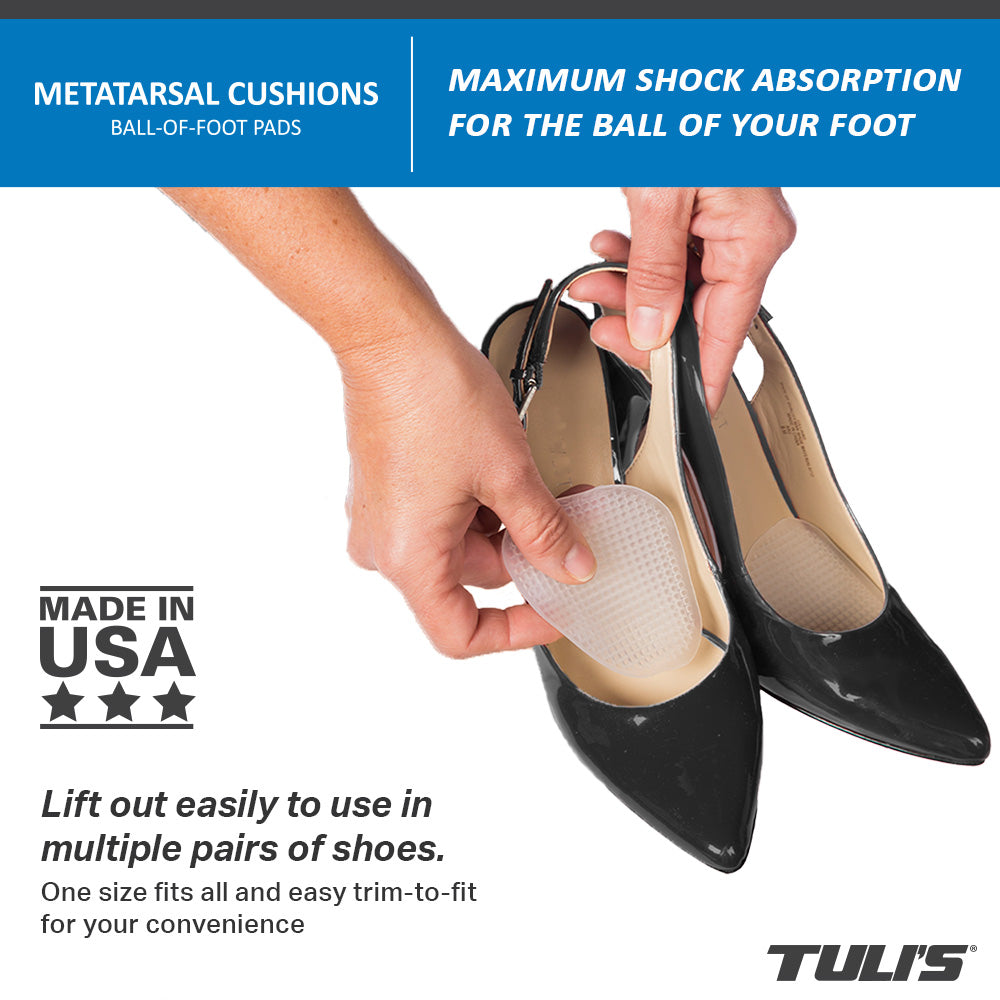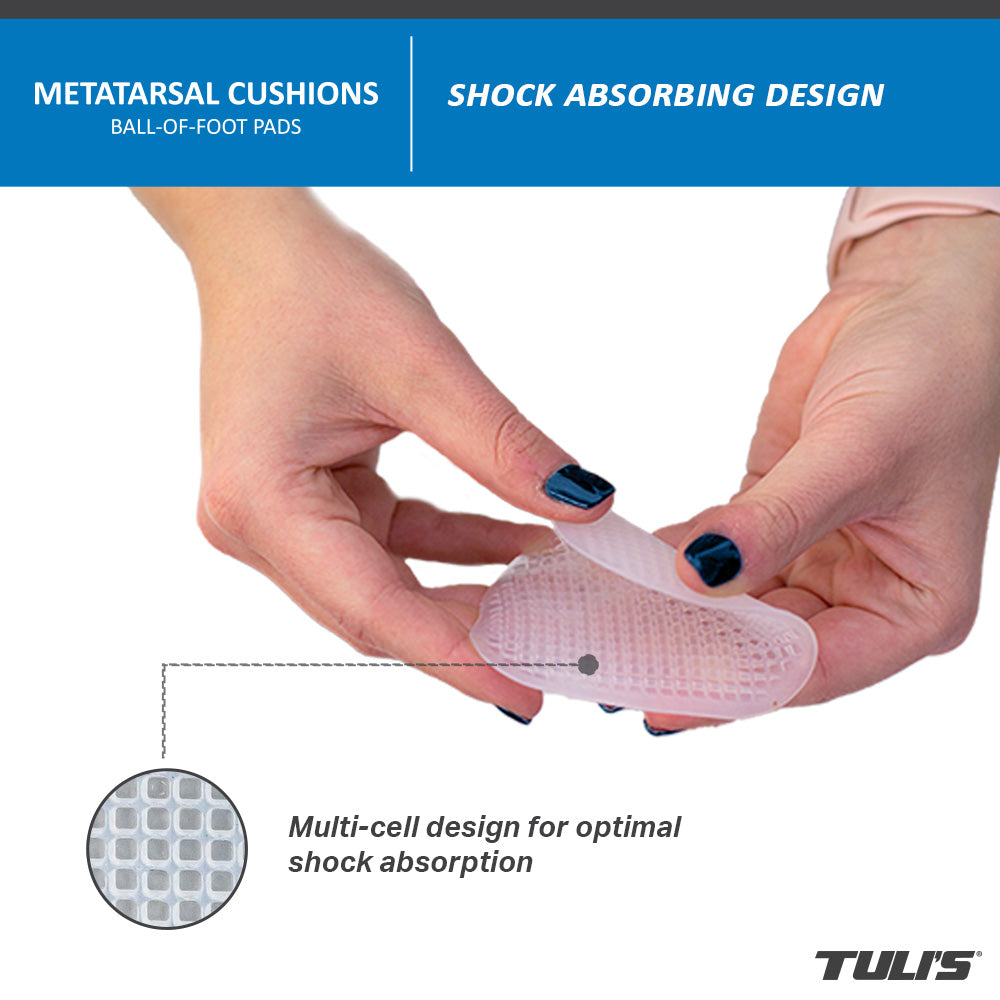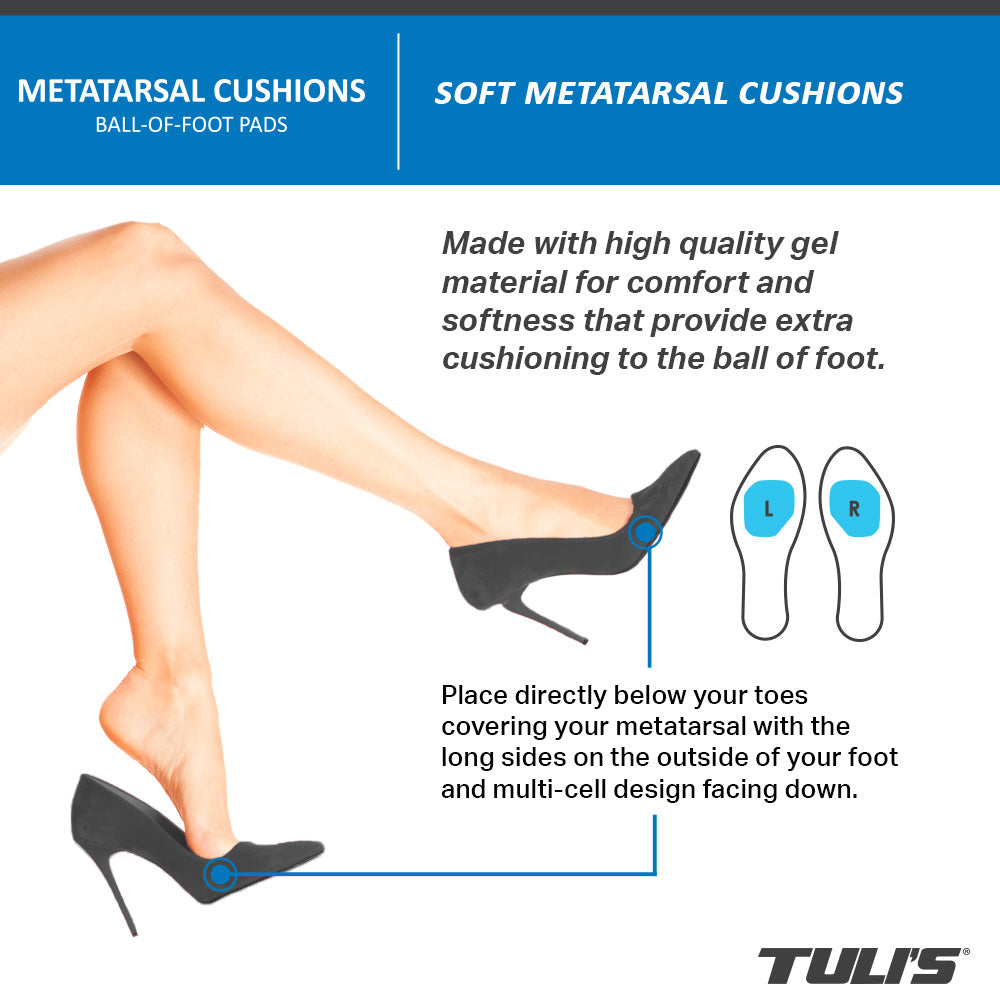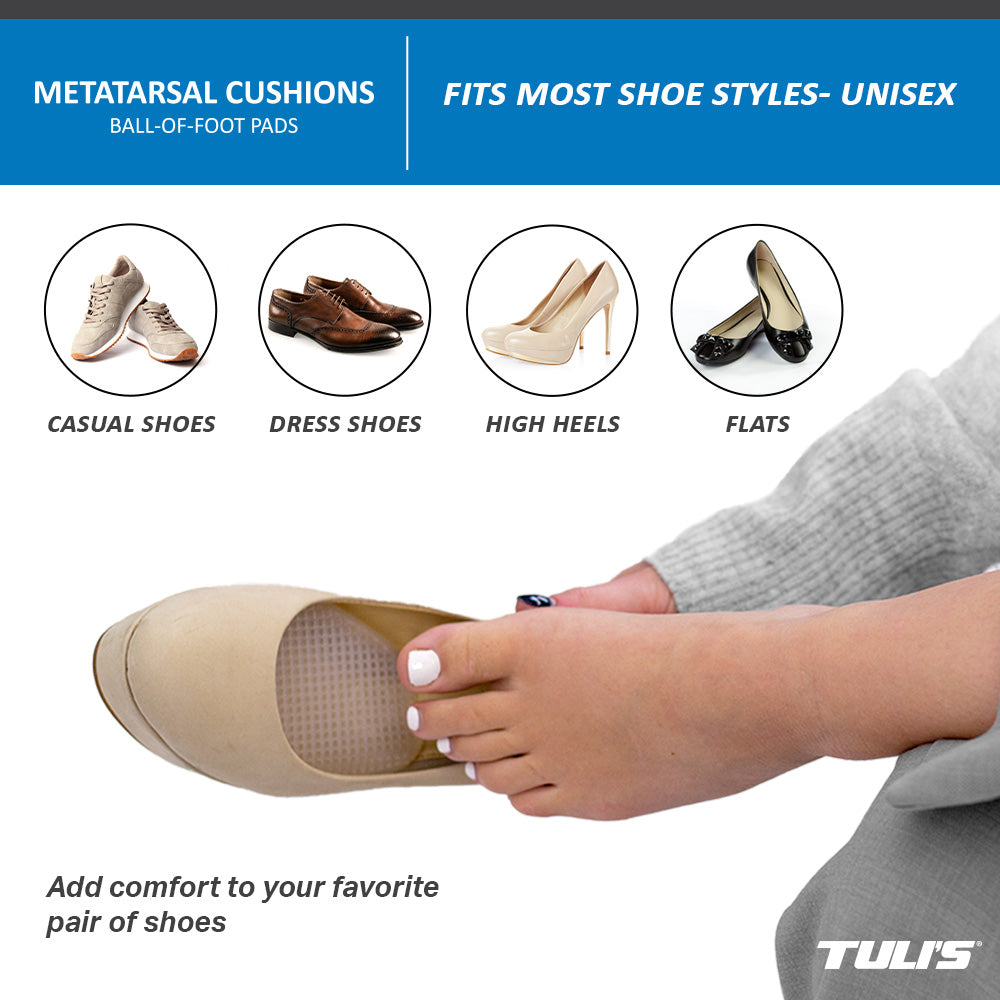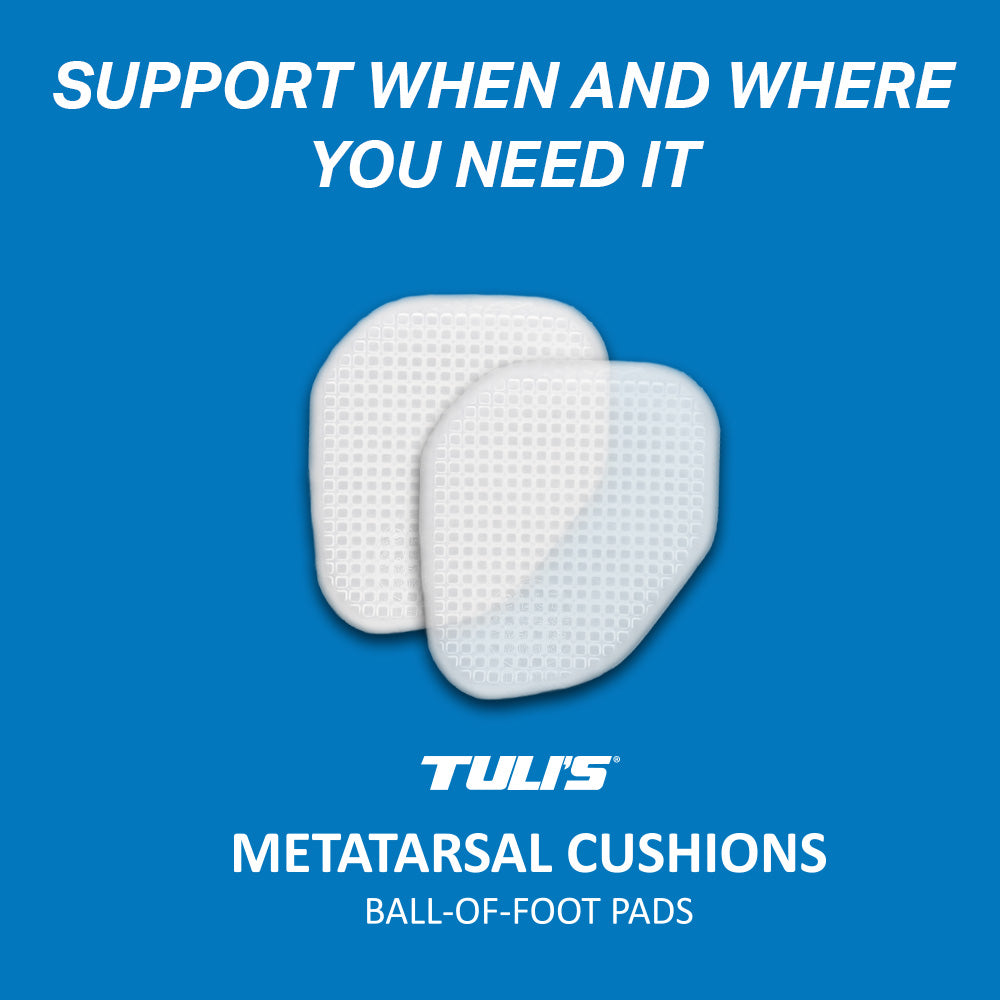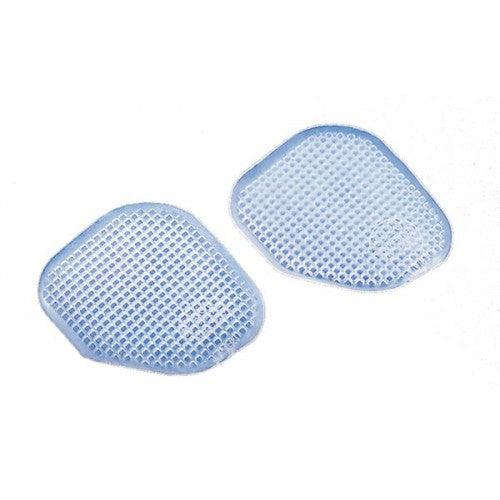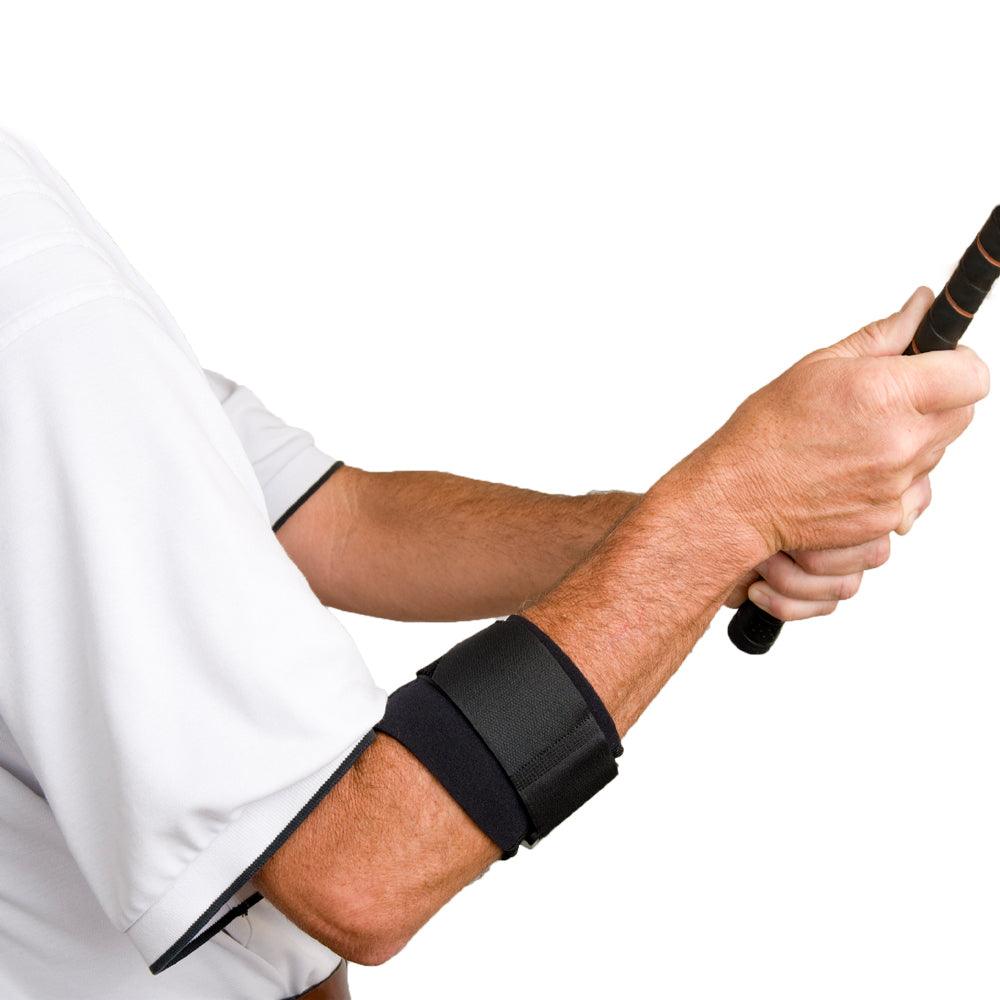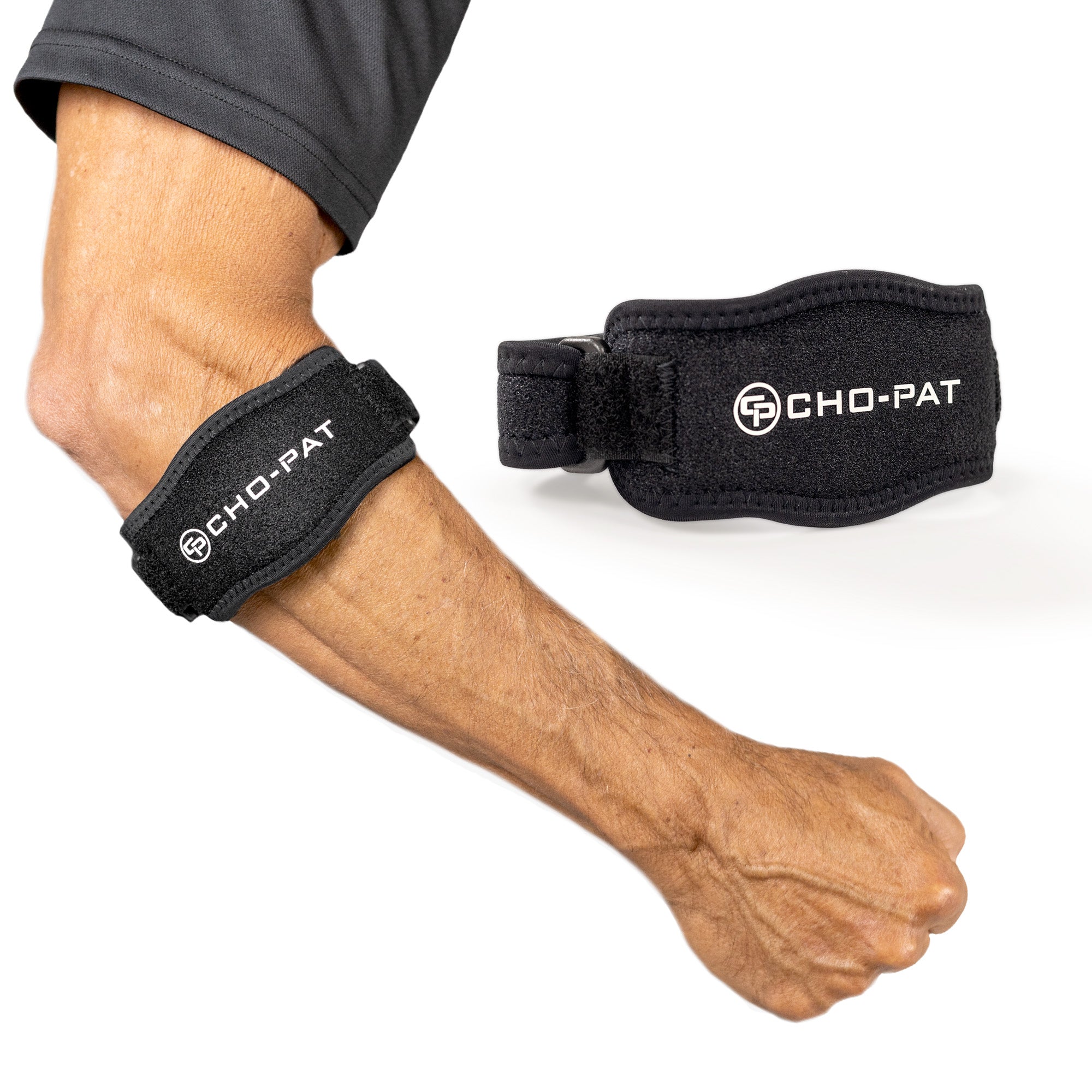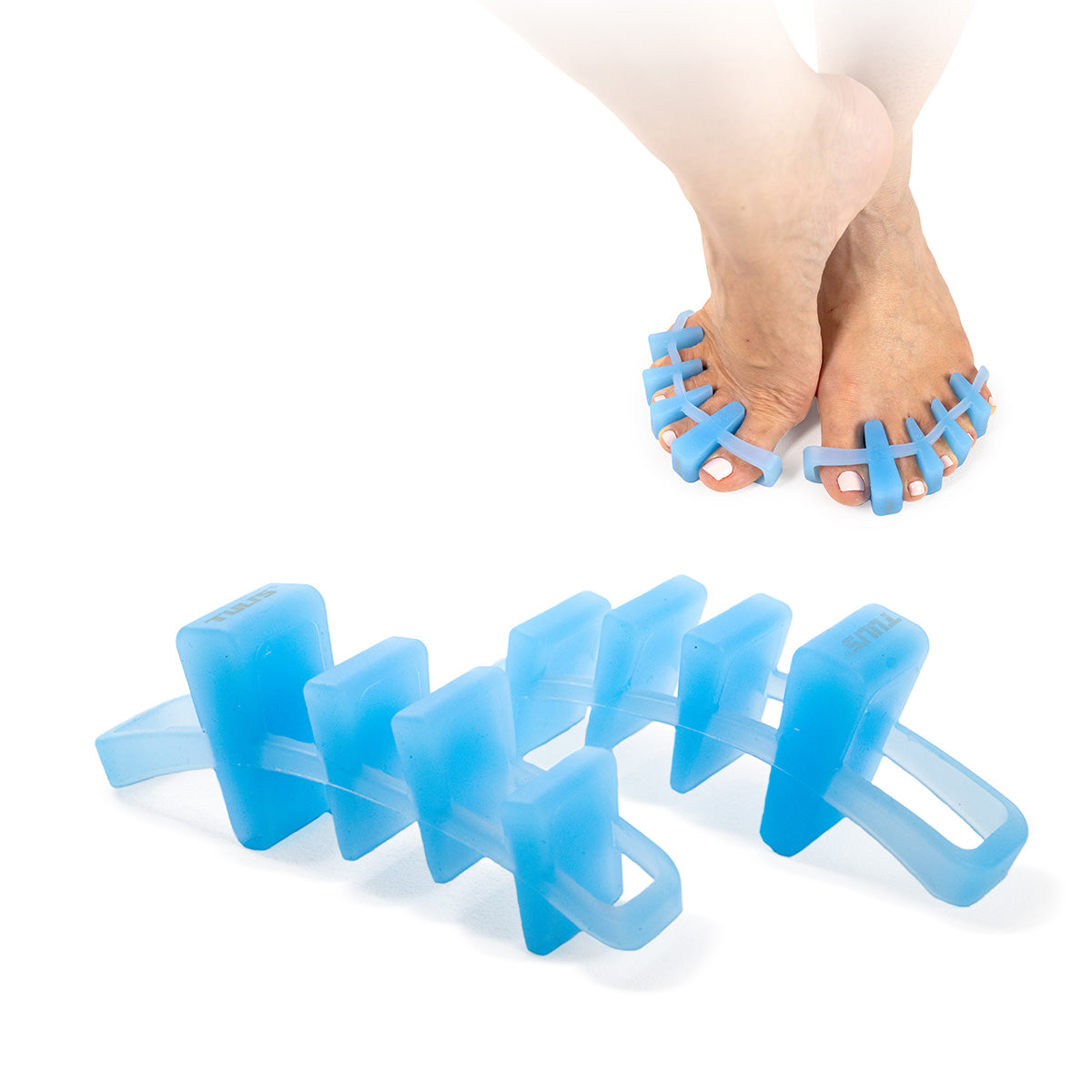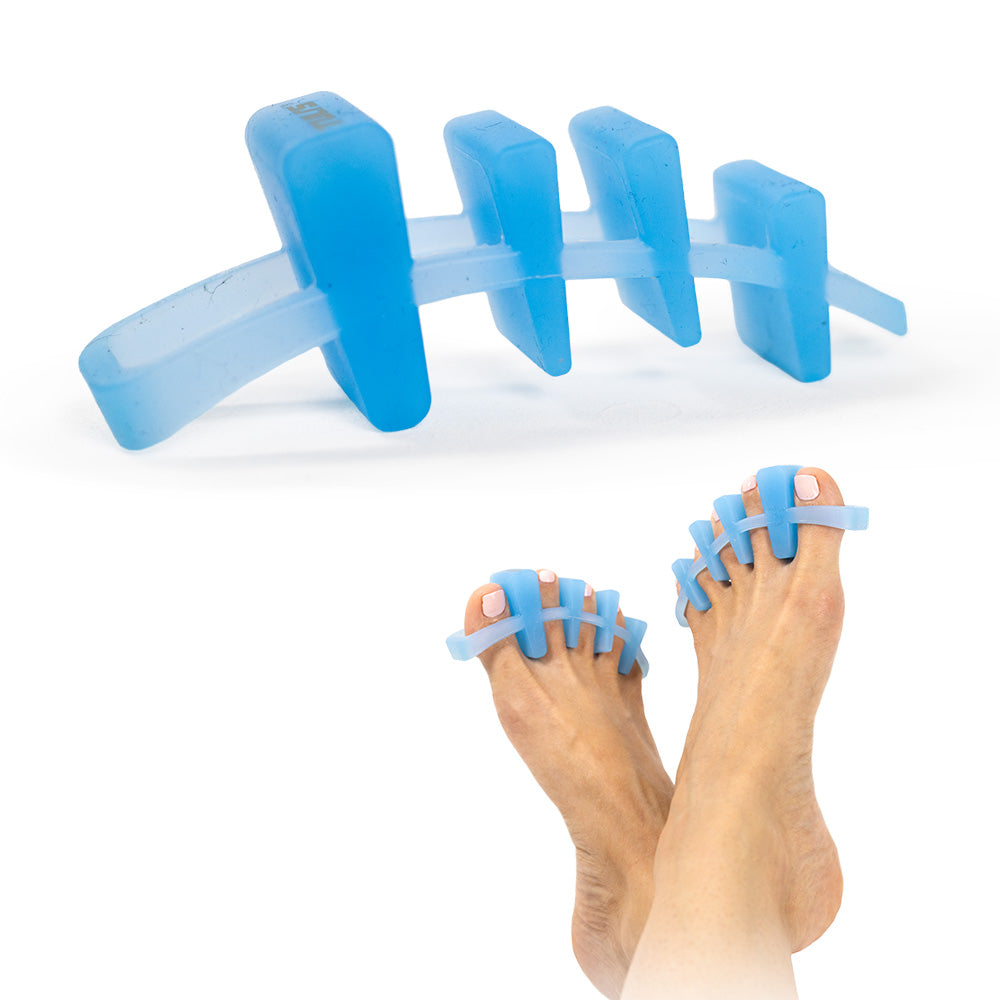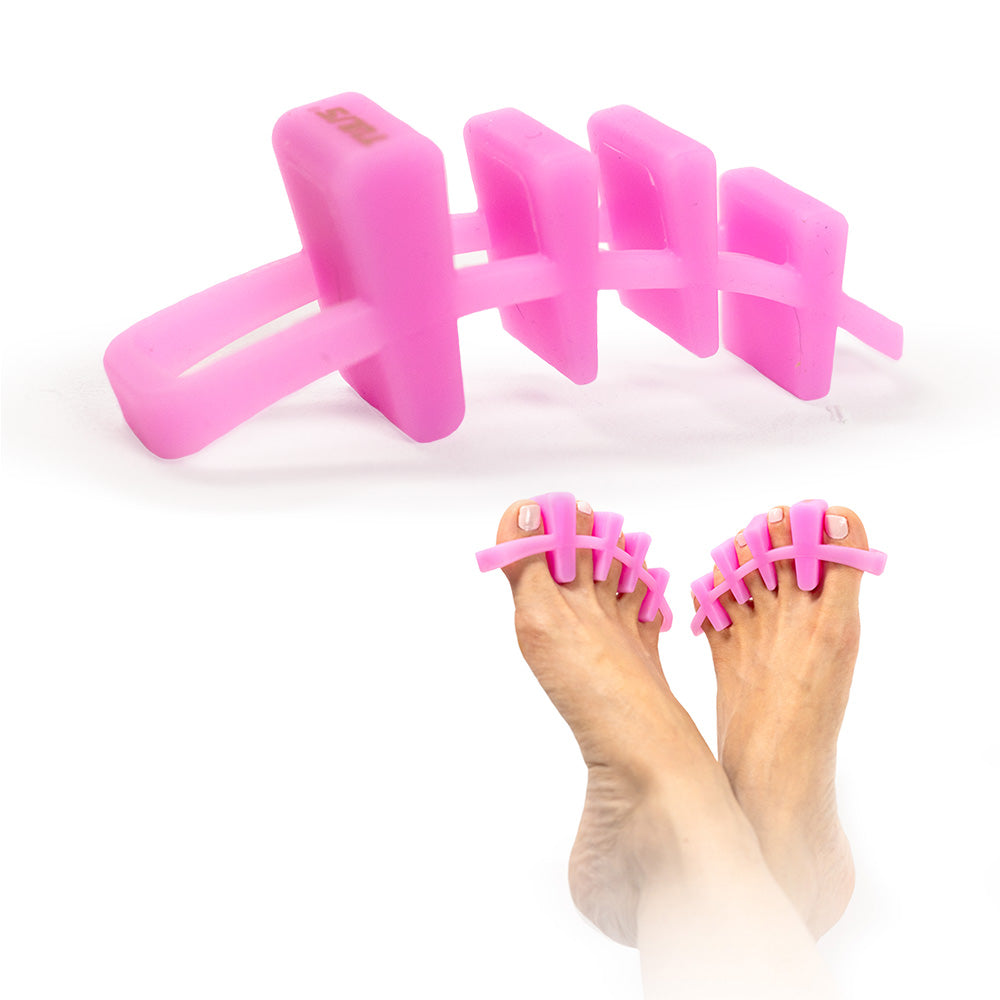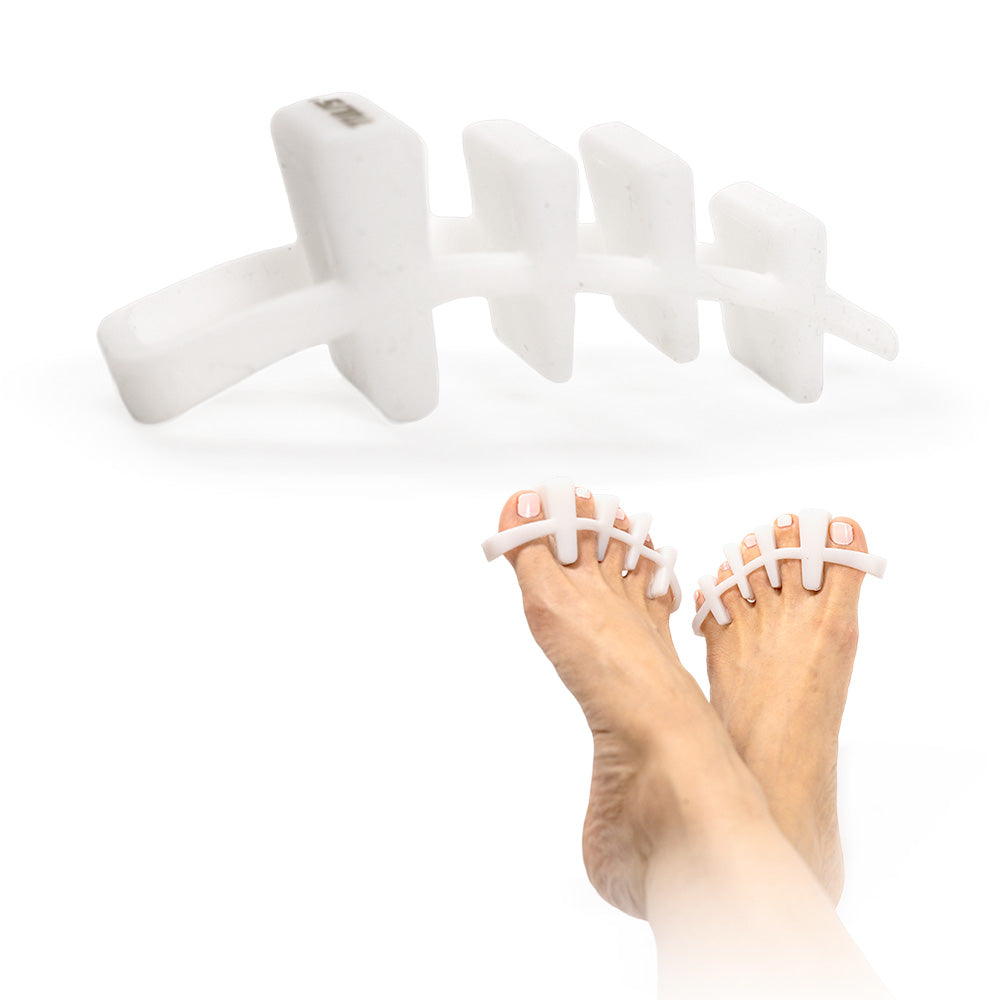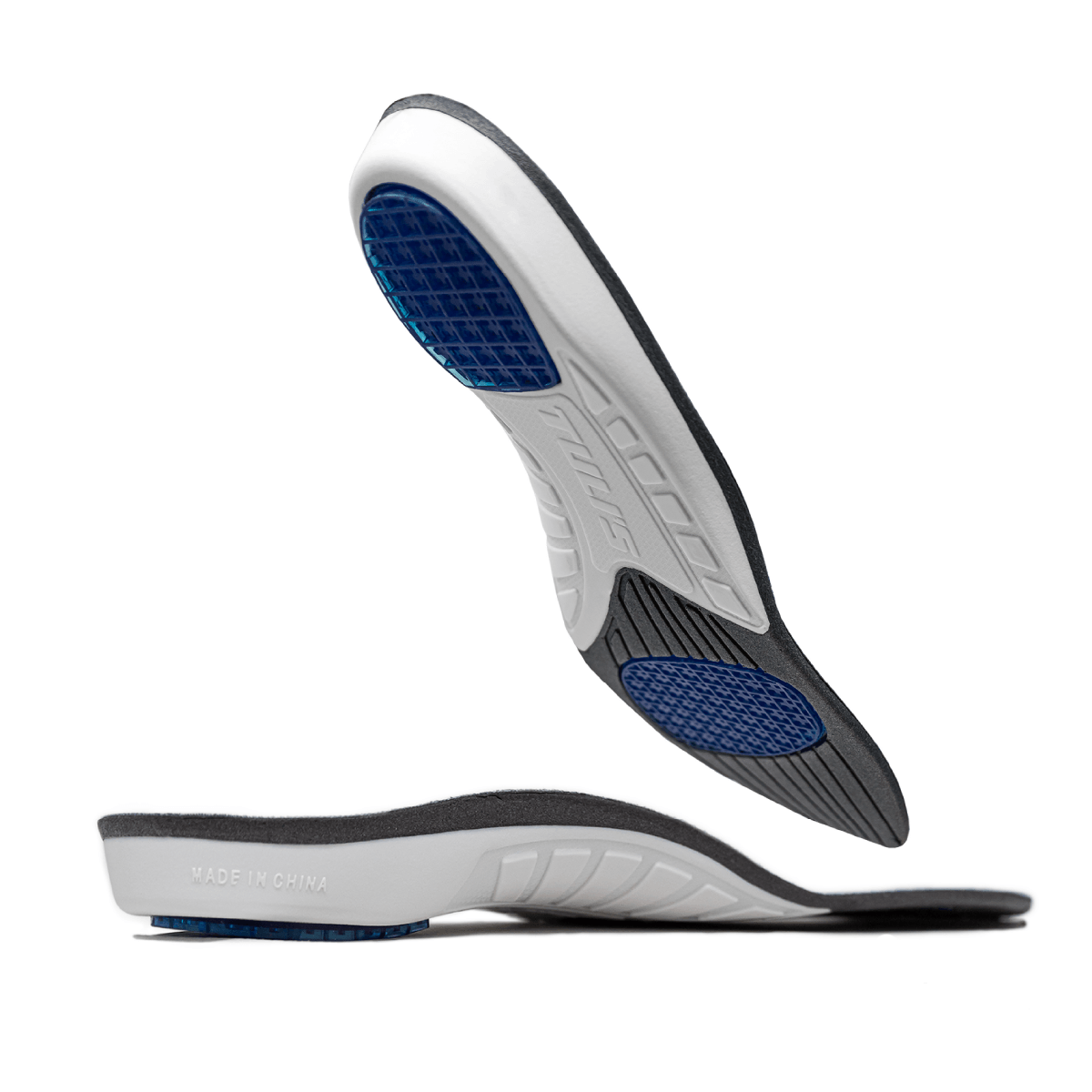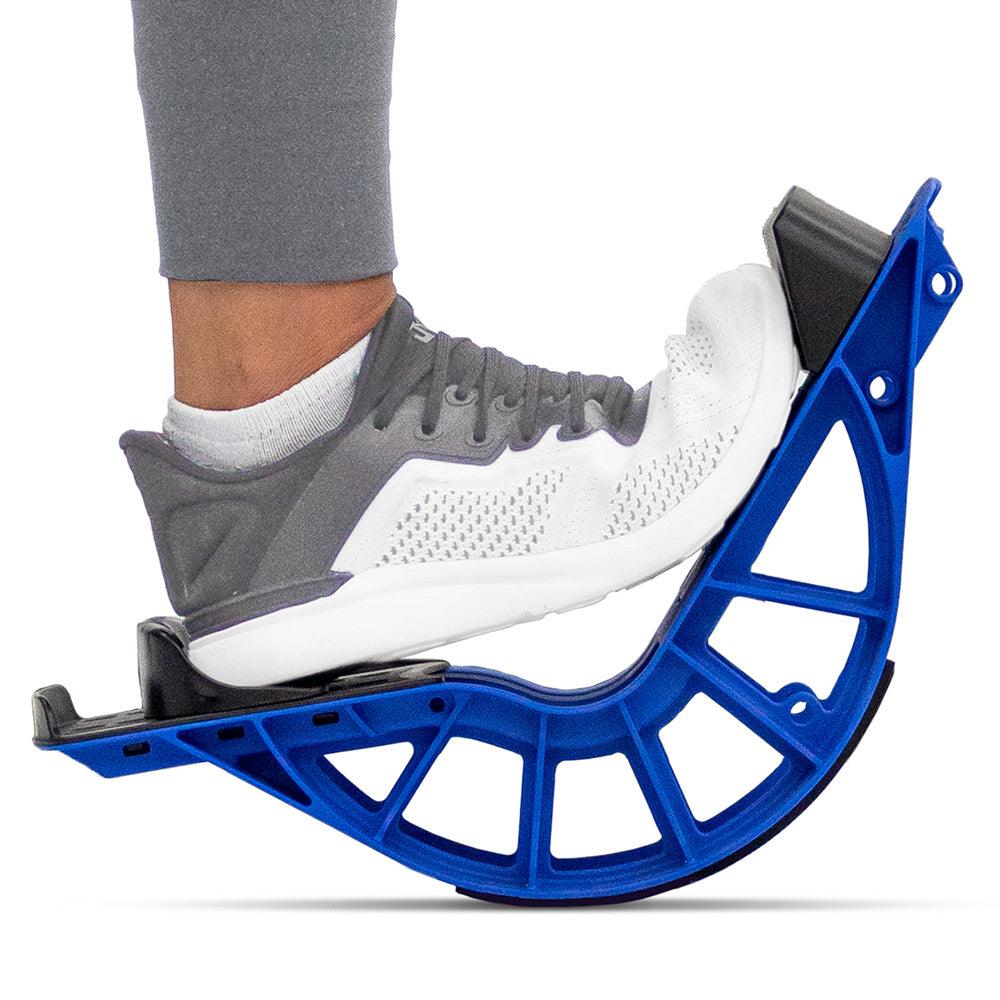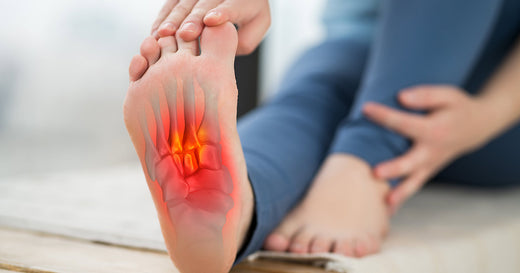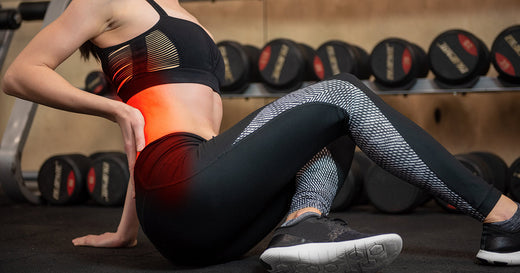There is a protective pad of fat that cushions the metatarsal heads at the balls of your feet. This cushion typically provides the shock absorption the body needs to avoid pain, but this is not always the case. Many factors including the wearing-away of this cushion, due to age or over use, can cause ball-of-foot pain (often referred to as metatarsalgia).
Causes
Ball of Foot Pain Causes
Pain in the ball of the foot may have many different causes; including: arthritis, ligament injuries, joint irritation, Morton's neuroma (a benign nerve tumor usually located between the 3rd and 4th toes), tarsal tunnel syndrome (pinched nerve), or excessive pressure over a long period of use. But most often it is caused by improperly fitting shoes.
High-heels and narrow toe boxes can really take their toll on your feet. Even the pair of shoes that starts out comfortable, by mid-day (or mid-night) begins to cause discomfort or pain, which in turn impacts the way you walk or stand.
Symptoms
Ball of Foot Pain Symptoms
The ball of the foot is particularly susceptible to stress injury because we are so often on our feet every day, so if you spend much of your day walking or running, pay close attention to any signs of injury in your feet.
Pain in the ball of your feet could make it difficult to continue working or exercising, and "powering through" the discomfort could make an existing injury worse. Ask a doctor if you experience the following ball of foot pain symptoms:
- Tenderness when pressure is applied
- Sharp pains when placing weight on your foot
- Inability to walk, stand, or run
- Swelling along the ball of the foot
- A dull ache or bruising
Treatments
Ball of Foot Pain Treatment
Your first step in relieving ball of foot pain is determining what is causing the pain. The easiest place to start is with your shoes. This isn't the first time you've read that high heels and even flat shoes can be bad for your feet. So, if you want to stop the pain, or want to take steps to prevent plantar fasciitis, buy shoes with a low to moderate heel, good arch support, and shock absorbency.
Try not to go barefoot, especially on hard surfaces. Your choice of shoes and the added support you can give them can make all the difference.
Replace Your Insoles
High-impact activity is a contributor to the wearing down of the padding at the balls of your feet, so be sure that your athletic shoes are providing the maximum support. Replace your insoles before they stop supporting and cushioning your feet.
The same goes for dress shoes. Designers are typically focused on the outside of the shoe – so you need to focus on the inside. It's a good idea to replace the insole of even a new pair of shoes with one that provides more support, especially arch support, and shock absorption.
FOR IMMEDIATE RELIEF
Support and Cushion Products:
If you're experiencing foot pain, wearing proper support products can provide relief and promote proper foot alignment.
Recommended products:
 Tuli's® Metatarsal Cushions ★★★★★ These offer maximum shock absorption for the balls of your feet. Because of their unique design, Tuli's Metatarsal Cushions do not need adhesive to stay in place and lift out easily for use in multiple pairs of shoes. |
 Tuli's® Plantar Fasciitis Insoles ★★★★★ A Premium arch support in the medial and metatarsal arches evenly distribute body weight and pressure throughout your feet to improve stability, balance, and posture. |
 Tuli's® So Soft® Insoles★★★★★ Thin enough to fit in any shoe, Tuli's So Soft Insole, uses soft fabric and Tuli's® multi-cell design to create our most comfortable insole to relieve foot fatigue from heel to toe. It's like having a personal shock-absorbing mat wherever you go! |
PLEASE NOTE: The information on this website and article is for information only and should not be used as a substitute for consulting your doctor. Consult your doctor for proper diagnosis and rehabilitation.




